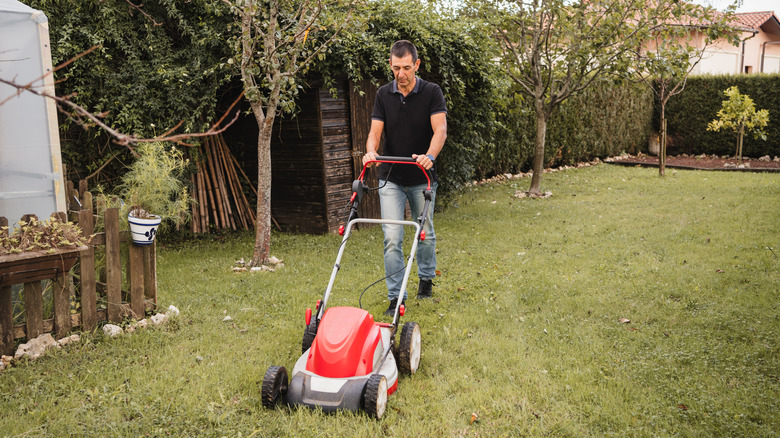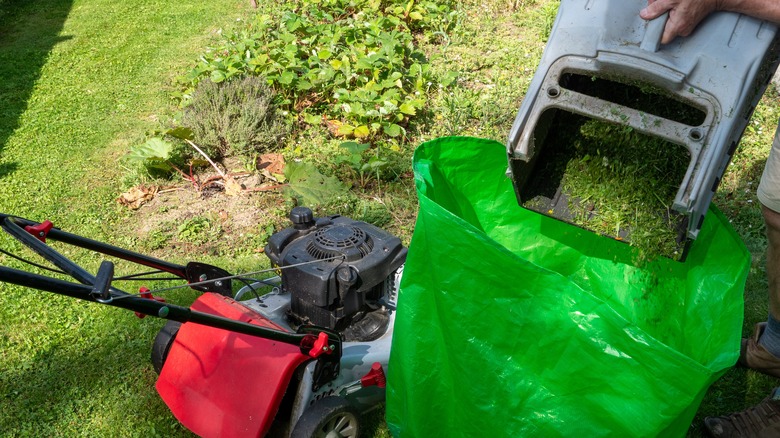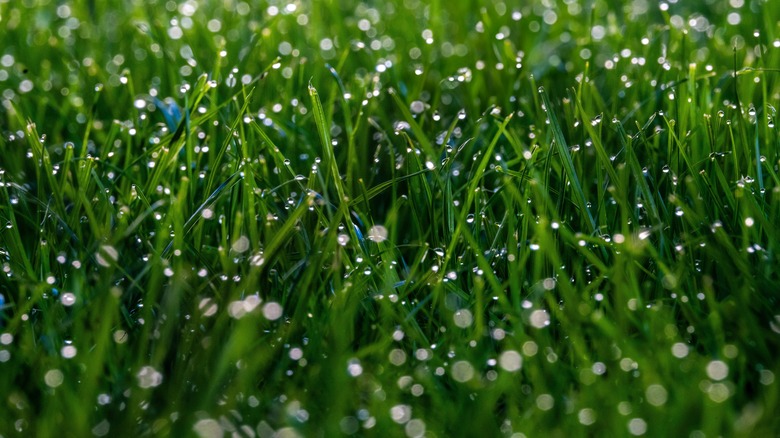Should You Mow The Lawn Before Or After It Rains? Some People Get It Wrong
You make time each week to mow your lawn, but what happens when the forecast calls for rain? Is it best to mow your lawn before it storms or right after? Can your mower even handle wet grass?
Most experts agree that a little rain won't hurt your mower or your lawn if you must mow. But it's best to do it in dryer conditions if possible, especially because mowing your lawn when it's wet can harm your mower and your grass. This is especially true if you're using a riding mower instead of a push mower. On the flip side, mowing when the grass and earth are dry ensures a cleaner cut.
So before you commit to an afternoon of yard work, check the weather forecast. If you don't have time to mow before it rains, delaying a cut by a day or two until the lawn dries out again won't be the end of the world if it means saving your mower. Plus, your grass will thank you.
Pros of mowing before it rains
Turf experts recommend mowing your lawn when conditions are dry if possible. This way, your lawn mower has an easier time, and your grass will look better as a result. Mowing in dryer conditions means you'll have a clean cut on each grass blade, and it's also easier for your mower to collect clippings in a bag when they're dry.
But, don't mow your lawn when the grass is parched. A lawn that's experiencing drought conditions will often enter a stage of dormancy. During this period, stress levels are high and the growth rate is low. Avoid cutting your grass during this time to let it rest and recharge. If you have to mow, use a higher blade height and consider watering your grass in the early morning hours to help it recover.
Each time you cut your grass, you take energy from the plants. So, as a rule of thumb, you shouldn't cut your grass by more than ⅓ of its height during any mow session. The ⅓ mowing rule keeps your lawn stress free all year. Limiting your cut by raising the mower blades ensures you don't overstress the lawn.
Cons of mowing after it rains
There are a few reasons why mowing after it rains is a bad idea, starting with your equipment. Many lawn mowers struggle to cut through wet grass, as it quickly clogs the blades and has trouble moving through the mower to the bag. It's best to return wet clippings to the lawn, but even then, you'll sometimes notice they end up in big, wet chunks. Even if your mower is powerful enough to get the job done post-rainstorm, you'll likely dull your blades faster.
Chances are your yard has low-lying spots, which accumulate more water than other portions of your lot. Mowing these wetter areas can make for especially messy work, and you run the risk of getting your mower stuck in the mud or leaving track marks — especially if you use a riding mower. Switch to a push mower to reduce the weight and avoid scarring your turf.
If you absolutely must mow your grass when it's wet, consider a method known as double mowing, one of the best methods for mowing your lawn more efficiently in these conditions. Start by mowing your lawn on a higher blade setting. After you've made the first pass, go back over the lawn on a lower blade setting. This tactic makes it easier for your mower to cut wet grass a bit at a time and allows it to break up clippings during the second pass. You'll want to sharpen your mower blades each season if you make this a habit.


